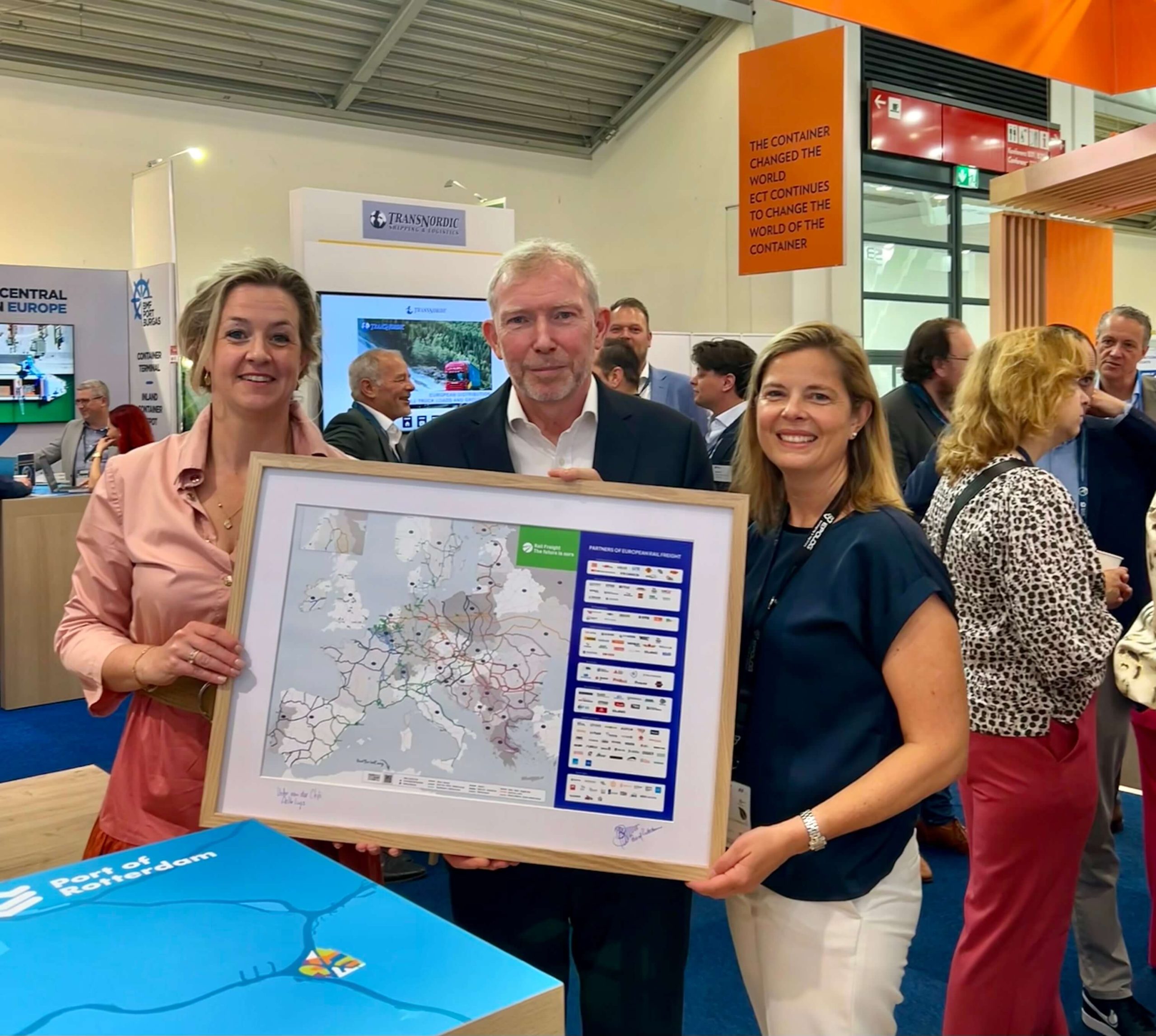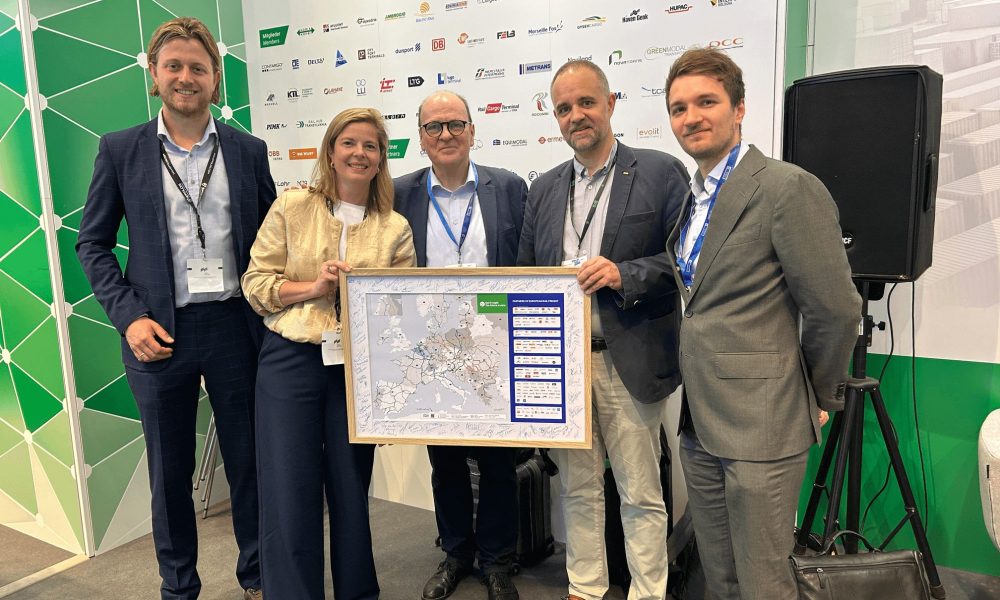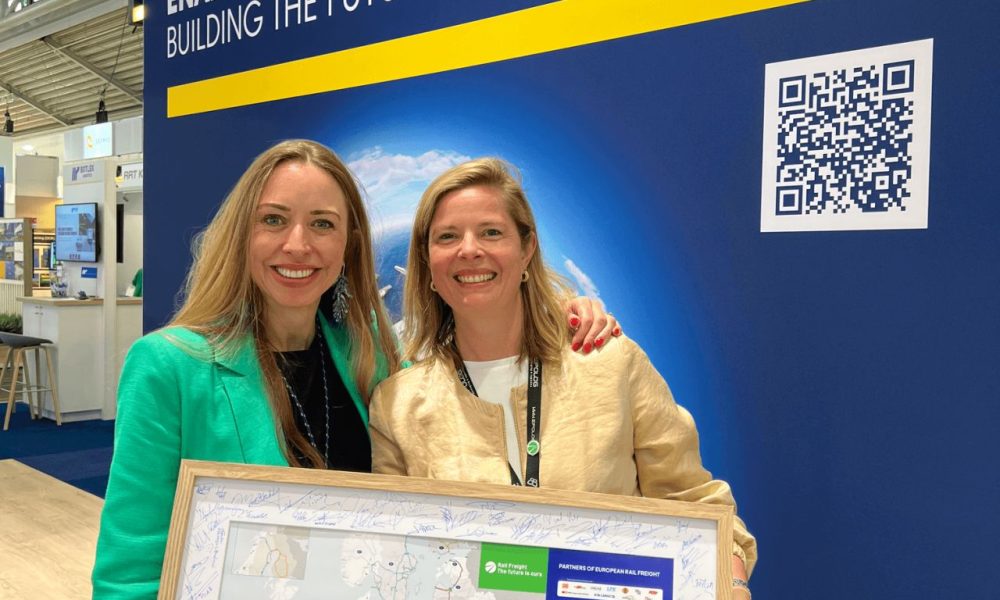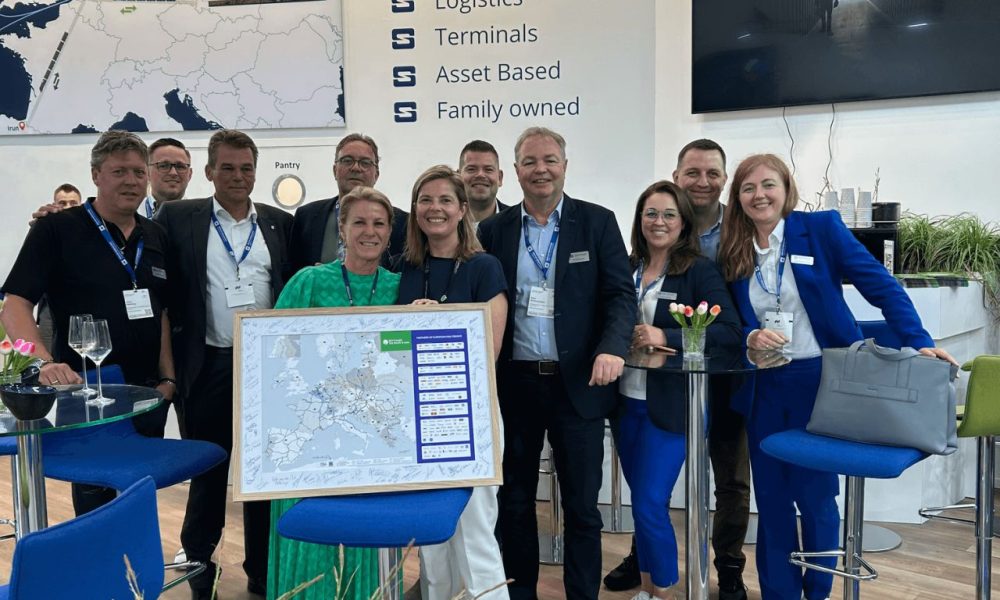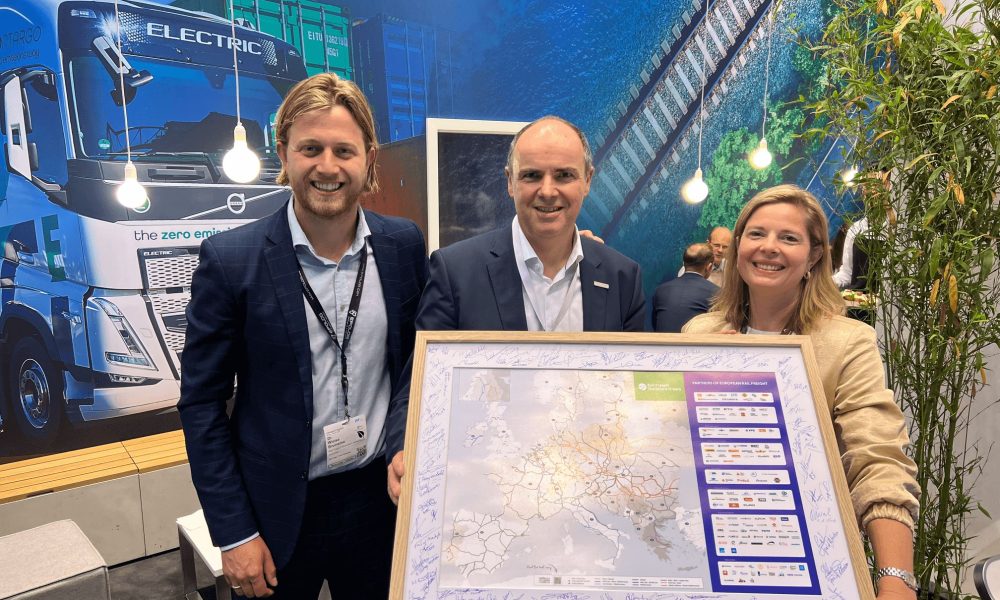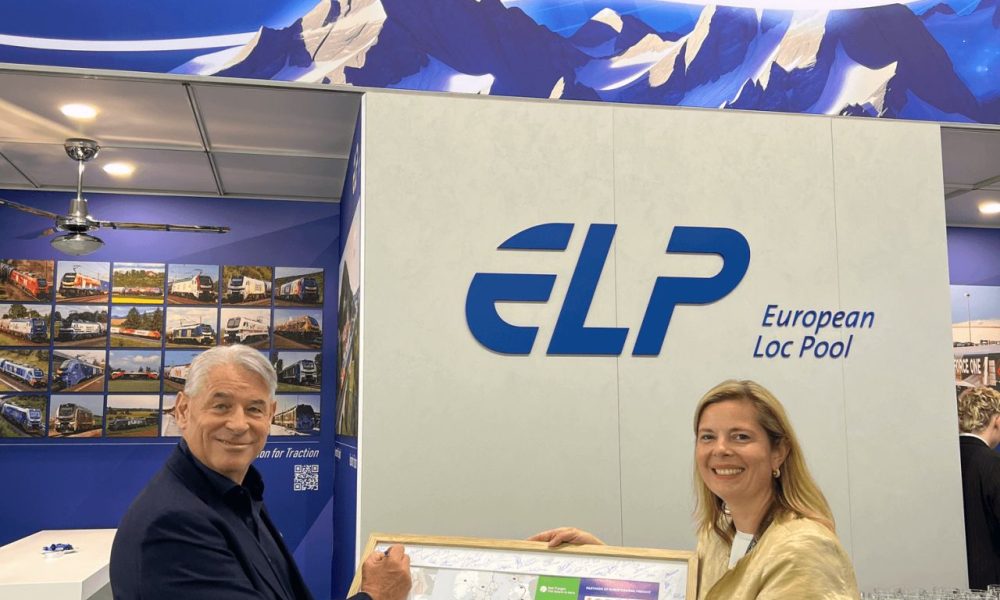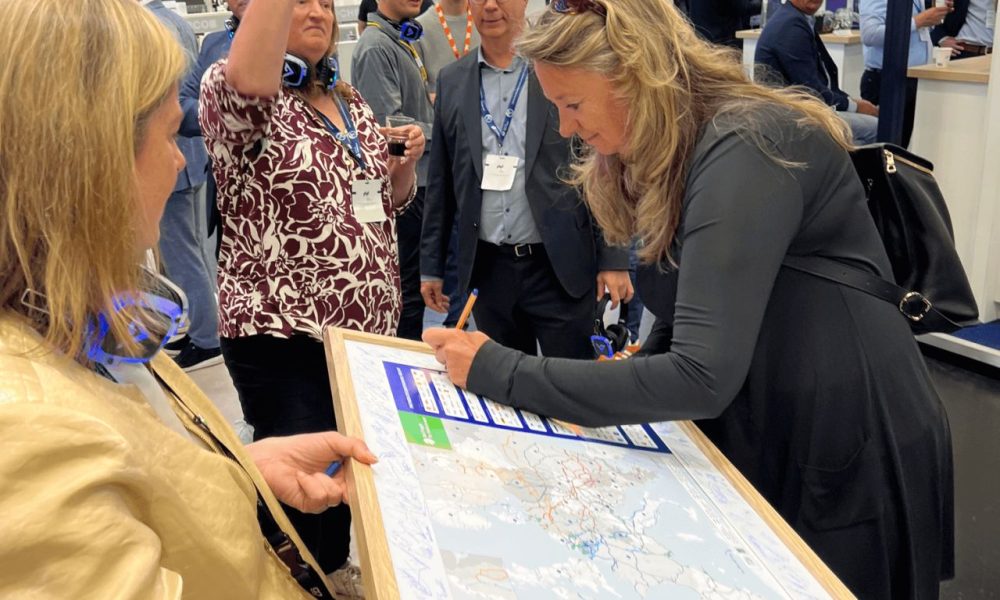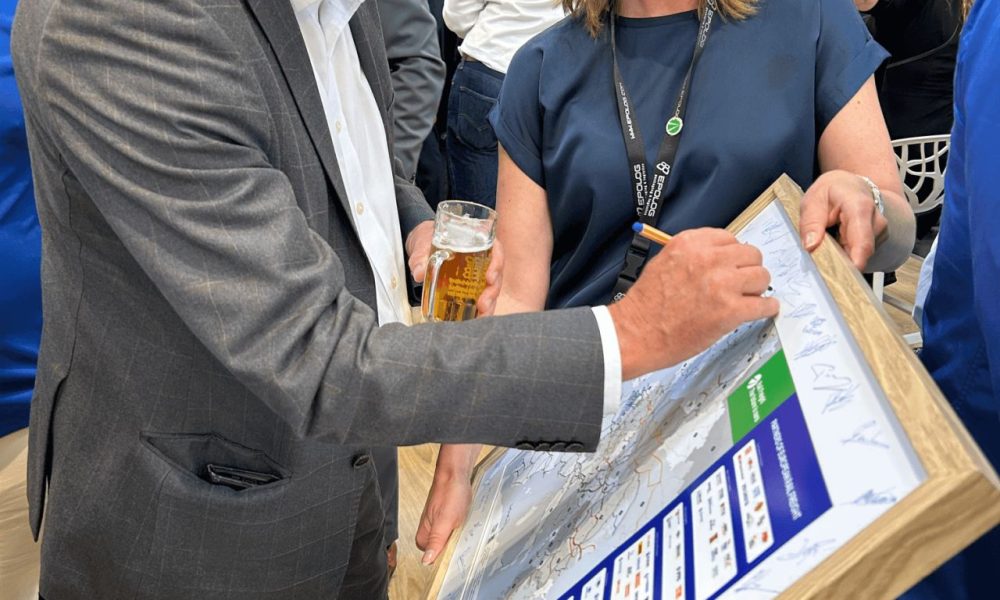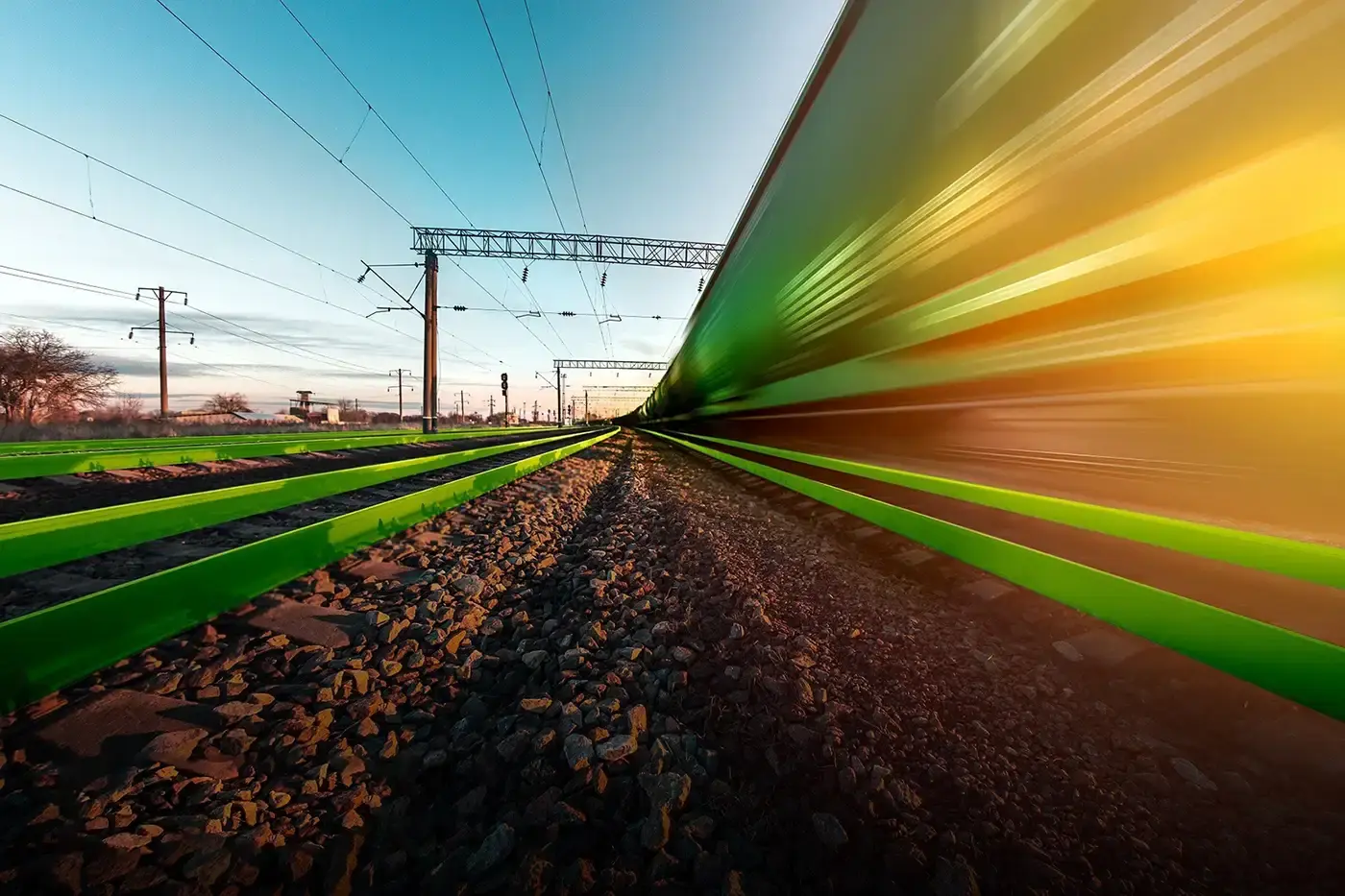At the transport logistic trade fair in Munich, we joined forces with the rail freight sector to strengthen the position of rail. One of the ways we did this was by launching the new map of European intermodal rail terminals. We used this map to inform and inspire stakeholders about the opportunities of rail transport.
Over the course of four days, the map was signed by dozens of representatives from the sector: rail operators, terminals, port authorities, policymakers and shippers. Their signatures symbolize a joint call to Brussels: break through national fragmentation and work towards a clear and unified European rail policy – with a focus on interoperability, a level playing field, and efficient cross-border cooperation.
From symbolism to action in Brussels
Later this year, we will personally present the map to EU Transport Commissioner Apostolos Tzitzikostas. By doing so, the signatories aim to underline that the sector is ready to step up — but that European policy and targeted investments are essential to make it happen.
This initiative aligns with the European Commission’s call for the rail sector to accelerate investment in innovation, digitalisation and scaling up. Rail freight is essential to achieving the goals of the Green Deal and plays a key role in strengthening Europe’s strategic autonomy.
Growing confidence in rail as a strategic mode of transport
We’re seeing more and more companies deliberately choosing rail as a structural part of their logistics strategy. Despite well-known challenges around capacity and disruptions, rail is becoming increasingly robust and reliable. Terminals, operators and platforms like Routescanner are improving end-to-end visibility across the chain.
Across Europe, we’re also seeing targeted investments in key improvements: extending tracks to 740 metres, accelerating the rollout of ERTMS and Digital Automatic Coupling, and improving border crossings.
At the transport logistic trade fair in Munich, many shippers told us they’re shifting from road or inland shipping to rail – not only driven by sustainability goals, but also because of reliability and better control over their supply chain. That trend is set to grow in the years ahead, especially now that the European infrastructure agenda is placing stronger focus on smart, cross-border rail connections.
Stay informed
Stay updated on all our events, news, and updates. Sign up for the monthly Rail News(letter).
